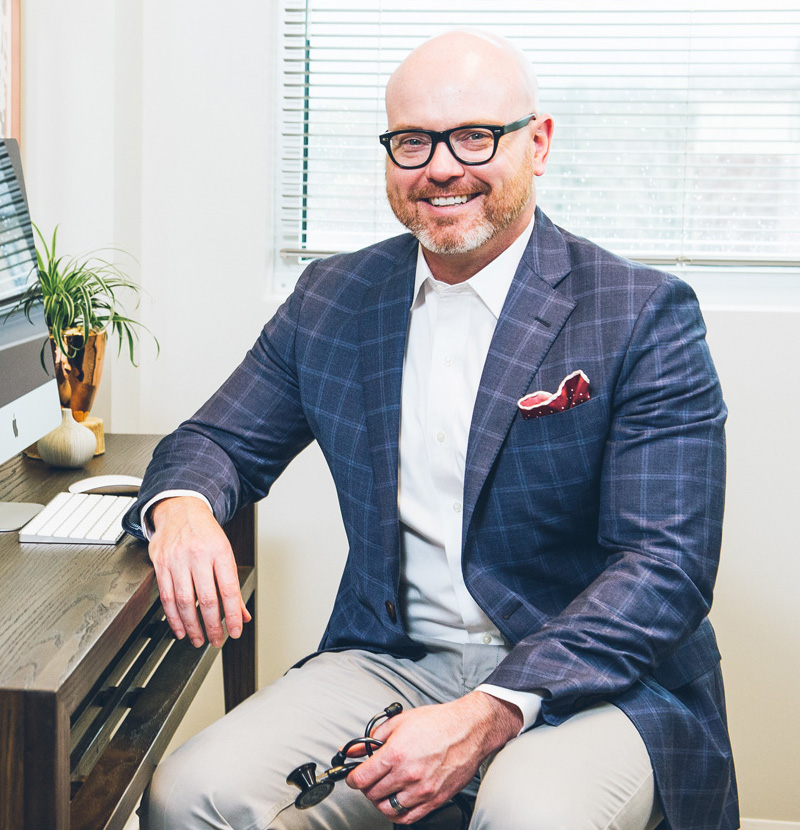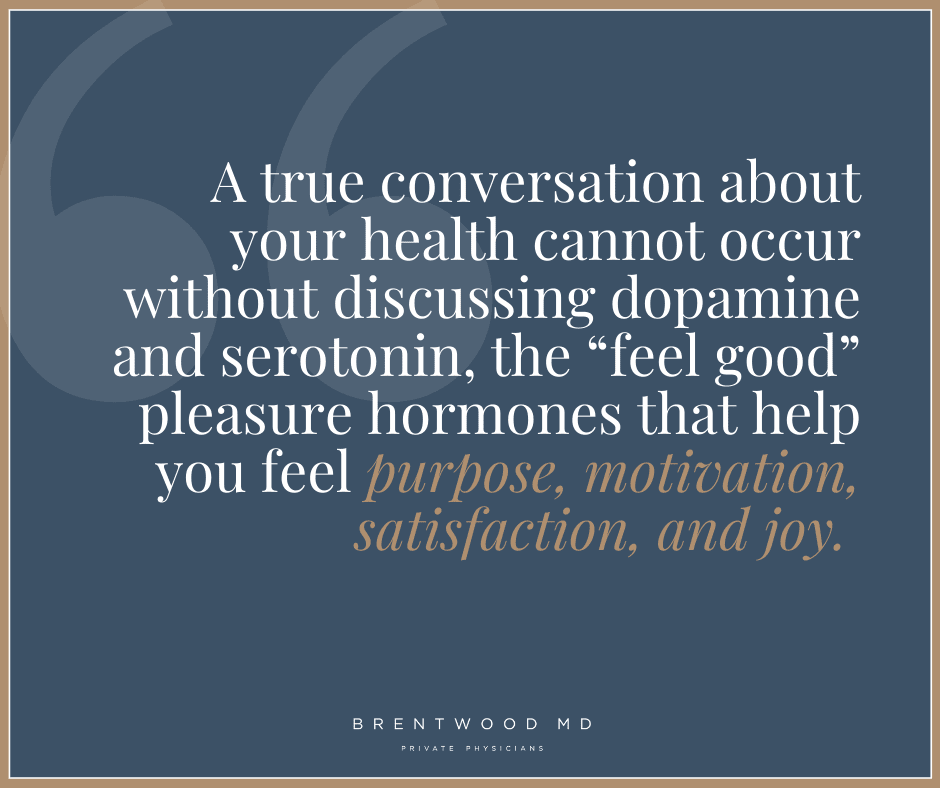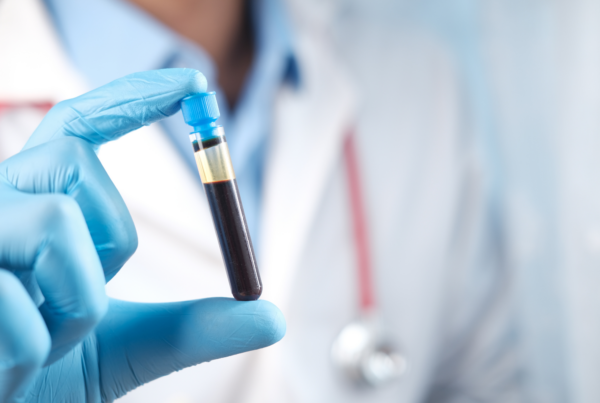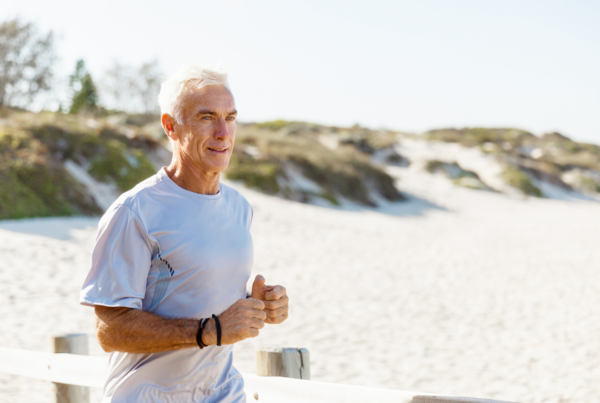Download file | Play in new window |
Check the greeting card aisle at any Hallmark or grocery store, and what do you find on the cards designated for 40th and 50th birthdays?
How to Tell When You’re Getting Old…
Better to Be Over the Hill Than Buried Under It!
Here Lies My Youth, R.I.P.
Birthday card after birthday card, perpetuating the myth that you have to “get old” and “feel old” after 50.
Who wrote those rules? I’m not sure, but we’re here today to rewrite them with a far more promising message: It’s possible- and even easy!- to add 30 productive and vibrant years to your life. With the right health and lifestyle choices, 90 can become the new 60.
So whether you’re approaching the Big 5-0 or you’re already well past it, here’s what you need to reclaim the vitality and joy that society says you should have already lost.
Optimize Your Mental Energy
You can’t get to a new destination without directions, right? That’s why you set the address in your GPS before you ever leave your driveway.
Achieving a steadfast recovery after 50 is no different. You must set your objectives and, more importantly, believe that you can reach your goals. If you believe that 50 is the beginning of the end, how will you ever achieve the motivated mindset necessary to make a resolved comeback?
Before you contemplate new eating habits or a better sleep schedule, you must optimize your mindset. Create a bigger mental energy sail to capture more tailwind and propel yourself forward. Fortunately, it’s never been easier or more practical to recapture vitality and performance after 50. The actions you take now will ward off, delay, or even prevent chronic disease.
Once you truly believe that a comeback is within your reach, take advantage of the three most significant tools at your disposal.
Wisdom
Wisdom is one of the most grossly underutilized strategies in the wellness space. You have four, five, maybe even six decades of wisdom to harness and deploy in your journey to make a comeback- so use it!
You may not have the invincible energy of a 20-year-old anymore, but you’re a heck of a lot wiser. You know yourself better. Leverage everything you’ve learned to apply the best strategies toward your personal health journey.
Science
The scientific breakthroughs over the last 10 to 15 years have been monumental. We now understand more about metabolic disease, the neurohormonal environment, and the importance of sleep than ever before. There’s so much powerful information available to better yourself and your health!
Technology
It’s only been about 15 years since the first iPods were released. At the time, we were awe-struck by such a tiny device that could hold and play our favorite music. Fast-forward to 2021, when we now have handheld devices that perform advanced tasks such as monitoring blood pressure, heart rate, blood sugar, sleep patterns, activity, and so much more.
Wearable healthcare technology makes it possible to make highly targeted, data-driven decisions about your health in real time, all with technology that’s unobtrusive and passive. By tracking these critical metrics, you’ll gain unprecedented insight into the way you feel, how you live, and what needs to change.
Build the Right Team
Now that you know what you want to do and why you want to do it, it’s time to identify who can help you get there. Build your own A-Team by leveraging the genius of others.
You don’t need to become an expert in every facet of your health journey to succeed. Instead, you need to partner with a physician, trainer, or physical therapist who shares your vision, beliefs, and value system. Align yourself with a committed team and you’ll quickly find that the “who” brings the right “how”.
Create a Better Hormonal Environment
Your neuro-hormonal environment regulates and controls your entire human experience. If you have any true ambition of adding a few high-functioning, vibrant decades to your life, you need a strategy to optimize your neuro-hormonal environment.
Take a moment to reflect back on each decade of your life. The impacts of evolving hormones and biology are clear. In your twenties, your body feels almost invincible as you push full-steam ahead through sleep deprivation, parties, and stress. By the time you hit your thirties, you find yourself turning to coffee, energy drinks, and other compensating factors as your body struggles to continue your 100 miles per hour lifestyle.
Eventually, you hit your forties and experience a noticeable- and unnerving- decline. You feel like you’re lost your edge. One poor night’s sleep ruins the rest of your week; your muscles struggle to recover from each workout; you suddenly feel new pain points you never knew existed.
If you continue to slide down this path without any plan or intervention, you slam into your fifties like a brick wall to find chronic disease, decreased vitality, and disappointment.
But this doesn’t have to be your fate! You can course-correct at any age. Start with these three pillars of neuro-hormonal health.
Insulin Sensitivity
I’ve said it a thousand times before and I’ll keep shouting it until everybody hears me: Insulin sensitivity is the holy grail of health. If you really want to achieve longevity, get your blood sugar under control.
High blood sugar, which comes attached to the hip of poor insulin sensitivity, creates a physiological gateway to metabolic disease. You won’t have the opportunity to feel your best and live a long, active life if your body isn’t optimized for insulin sensitivity.
Testosterone Optimization
When done properly and responsibly, testosterone optimization helps you feel like the best version of yourself, not somebody else. Men and women alike benefit dramatically from optimized hormone levels, especially after the age of 50.
It’s testosterone that helps you feel that fire in the belly that drives you through the day and helps you maintain your creativity, grit, resourcefulness, and desire.
Testosterone is best known as an essential male sex hormone, but it’s more nuanced than its reputation suggests. The truth is that testosterone works intricately with other hormones in the male and female body to create a strong and powerful core infrastructure.
You can turn to testosterone therapy to enjoy benefits like renewed energy, less fatigue and brain fog, increased lean muscle mass, and reduced risk of heart attack and stroke.
Joy
Doctors focus on your cholesterol and blood pressure, but when was the last time your doctors asked you how happy you feel? Or what you do to find enjoyment? Probably never.
Yet a true conversation about your health cannot occur without discussing dopamine and serotonin, the “feel good” pleasure hormones that help you feel purpose, motivation, satisfaction, and joy.
It’s critical to increase your dopamine and serotonin levels, not by taking a pill, but by pursuing the things that make you happy. Since joy rarely falls out of the sky and into your lap, it’s up to you to take an audit of your life and ask yourself: Where can I find more joy? What really brings me joy?
Eat Better, Move Better, Recover Faster
Eating and exercising are the two components of wellness that we all know. They’ve been beaten into our brains since we were young. Unfortunately, conventional diet and exercise advice may lead you farther from your goals than when you started.
Ask When To Eat, Not What
Before you improve what you eat, you must improve when you eat. That factor is more important than any of the trendy diet debates occurring in the background. I’ve studied this space for many years, and I’ve discovered that the physiology and biochemistry of the human body require long periods in a fasted state.
So before you create a shopping list of expensive ingredients or try to learn the difference between the Atkins and the South Beach diets, explore intermittent fasting. I recommend fasting for 16 hours, then eating within an eight-hour window. Once you do open your mouth to eat, enjoy nutritious foods that aren’t processed or refined.
Move and Recover
What’s the go-to exercise in every gym across America? The treadmill. But did you know that jogging on a treadmill at a moderate, medium-intensity delivers fewer results, all while creating damaging wear-and-tear on your body?
Enhance your wellness by choosing a safe and more efficient type of movement. High-intensity interval training is the best choice because it burns fat and builds lean muscle at the same time. This limits the risk of injury and drives results you can see.
Then recover! It is delusional to think you can perform at a high level non-stop. Just like a professional athlete, you need to take periods of intentional recovery time. And there’s no better recovery than sleep, the most underrated component of good health.
The bottom line? If you’re over 50, this guide should infuse you with the hope and confidence that it’s completely possible to reclaim a better, more rewarding quality of life. If you’re under 50, this framework allows you to fly past your 50th birthday without ever slowing down.

Dr. Aaron Wenzel is a concierge physician specializing in the care of fast-moving entrepreneurs, executives, and public figures in the Nashville, TN area. Dr. Wenzel’s diverse life experience and extensive training in family medicine, emergency care, nutrition, and hormone replacement therapies give him the unique platform to provide unmatched care for his patients.








